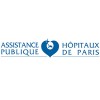
Impact of Neurophysiological Facilitation of Respiration in Preterm Neonates
Neonatal Respiratory Distress SyndromeBackground: Respiratory distress syndrome (RDS) or Neonatal respiratory distress syndrome (NRDS) is characterized by pulmonary insufficiency, in preterm neonates and is the major cause of death in preterm. Neurophysiological facilitation of Respiration (NFR) technique produce reflex respiratory movement response, as it involves application of external proprioceptive and tactile stimuli that is known to alter the rate and depth of breathing Aim: This study is being conducted to determine the effectiveness of NFR in preterm neonates diagnosed with RDS. Methods: In this study 30 preterm (1- 8 days) neonates diagnosed with Respiratory Distress Syndrome will be taken and assigned into two groups,Experimental group (n=15) and control group (n=15). Neonates within eight days of birth those born before 37 weeks of gestation, diagnosed with RDS were included in the study. Neonate undergone recent surgery or congenital disorder, or medically unstable will be excluded. Data analysis: Normality of the collected data will be analyzed with either two of the normality test i.e. Shapiro Wilk test and Kolmogorov Smirnov test based on sample size. Demographics characteristic of collected sample will be expressed in a mean standard deviation or median and range based normality. For Between group comparison Independent t test or Mann Whitney U test and for within group comparison paired t test or Wilcoxon singed ranked test will be used.

Intratracheal Vitamin A Administration With Surfactant for Newborn Respiratory Distress Syndrome...
RDSInfant3 moreTo research the effect of vitamin A to newborn respiratory distress syndrome by intratracheal administration with surfactant.

Automatic Oxygen Control (SPOC) in Preterm Infants
Infantile Respiratory Distress SyndromeVentilator Lung; NewbornSingle-center, randomised controlled, cross-over clinical trial in preterm infants born at gestational age below 34+1/7 weeks receiving supplemental oxygen and respiratory support (continous positive airway pressure (CPAP) or non-invasive ventilation (NIV) or invasive ventilation (IV)). Routine manual control (RMC) of the fraction of inspired oxygen (FiO2) will be tested against RMC supported by automatic control (SPOC) with "old"-algorithm and RMC supported by CLAC with "new"-algorithm. The first primary hypothesis is, that the use of the "new" algorithm results in more time within arterial oxygen saturation (SpO2) target range compared to RMC only. The a-priori subordinate hypothesis is, that the new algorithm results in more time within SpO2 target range compared to SPOCold. The second primary hypothesis is, that the use of 2 seconds averaging time of the SpO2 Signal results in more time within arterial oxygen saturation (SpO2) target range compared to the use of 8 seconds averaging interval of the SpO2 signal.

Effect of Antenatal Corticosteroids on Neonatal Morbidity.
Neonatal Respiratory Distress SyndromeIt will be a randomized controlled trial. There will be two study groups. Study group 1 will be given dexamethasone while study group 2 will be given betamethasone. The control group will be given placebo.

Impact of Antenatal Corticosteroid Therapy on Postnatal Surfactant Use in Preterm Infants
Hyaline Membrane Disease (HMD)No study has shown that two doses of corticosteroids are more effective than a single dose in lung maturation and prevention of hyaline membrane disease (HMD) The aim of this study is to assess the impact of the number of doses on the severity of HMD.

The Use of Maternal Serum Unconjugated Estriol for Monitoring the Prevention of Neonatal Respiratory...
Neonatal Respiratory Distress SyndromeThe objective of this project is to evaluate clinical significance of measuring maternal blood estriol levels, after the administration of antenatal corticosteroids to enhance lung maturity. The investigators will test for associations of the change in maternal estriol with the development of respiratory distress syndrome. The investigators are also interested in determining whether salivary estriol is a valid surrogate to estriol blood assays. In addition the investigators will correlate these changes to pharmacokinetic (PK), pharmacodynamics (PD), and pharmacogenetic measures of betamethasone administration and fetal respiratory outcome

Breathing Variability and NAVA in Neonates
Neonatal Respiratory Distress SyndromePrematurityThe current study is a crossover trial, aiming at evaluating the effect of NAVA -NIV compared to Nasal Intermittent Positive Pressure Ventilation (PC-NIV) at the same level of peak inspiratory pressure, in terms of: breath-by-breath variability of tidal breathing amplitude, variability of the other breathing patterns; lung mechanics; gas exchange; rate of episodes of apnea; bradycardia and desaturations; respiratory asynchrony and comfort, in preterm infants < 37+0 weeks+days post-menstrual age.

Effective Approaches & Strategies to Ease Off Nasal CPAP In Preterm Infants
Neonatal Respiratory Distress SyndromeExtremely Low Birth Weight Infant (ELBW)1 moreThough Nasal Continuous Positive Airway Pressure (NCPAP) is a commonly used form of non-invasive neonatal respiratory support, the optimal method of weaning off NCPAP is not well established. In this prospective, two-center randomized control trial we hypothesize that gradually increasing time off NCPAP (sprinting) increases the success of weaning NCPAP off in infants born between 23 0/7-30 6/7 weeks of gestational age.

Betamethasone and Severity of Hyaline Membrane Disease
Pregnant Women Receive CelestenPrimary purpose: to study the relationship between betamethasone placental transfer and the occurrence and severity of the Hyaline Membrane Disease.

Nasal Intermittent Positive-Pressure Ventilation for Twin Infants With Respiratory Distress Syndrome...
Neonatal Respiratory Distress SyndromeIn the present study, we hypothesized that primary mode nIPPV initiated shortly after birth would decrease the incidence of intubation or death in twin infants when compared to nCPAP.
